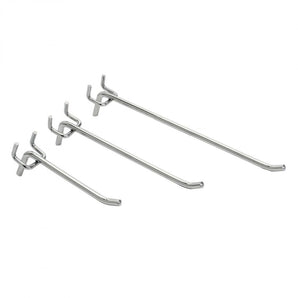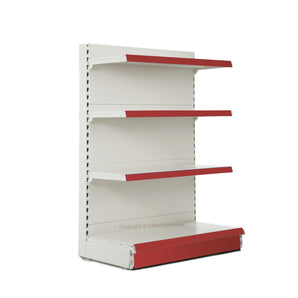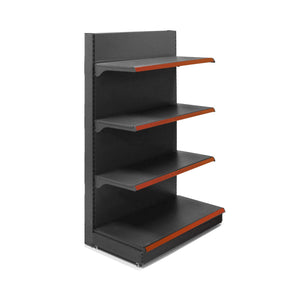Introduction
Choosing the right retail shelving is essential for space efficiency, store aesthetics, and increased sales. Whether you run a supermarket, DIY store, or boutique, your shelving needs to perfectly match your product type, customer flow, and brand image.
A well-organized store not only provides a functional space, but also a pleasant shopping experience. That's why it's worth investing time and resources in choosing the most suitable shelving for your business.
1. Type of products
The first criterion is the type of products you sell. Heavy or bulky products require industrial shelves, made of durable steel, capable of supporting heavy weights. On the other hand, small items, such as cosmetics or accessories, can be elegantly displayed on lightweight shelves, sometimes made of wood or melamine-faced chipboard.
For example, an electronics store will need sturdy shelves for televisions and large appliances, while a perfumery will want elegant, well-lit shelves that showcase product packaging.
2. Available space and its configuration
Good organization starts with accurate measurements. Assess the width, height, and depth of your display space. If you have limited space, vertical shelving will help you utilize the height of your store. Corner or L-shaped shelving can also transform a seemingly useless space into an efficient display area.
For large spaces, plan wide aisles and group products by category, using shelving on wheels or a modular system for maximum flexibility.
3. Durability and materials
Commercial shelving is subject to daily wear and tear. It is essential to choose durable materials, such as galvanized steel, stainless steel or industrial aluminum. Electrostatically painted surfaces are more resistant to scratches and moisture. For DIY stores or warehouses, we recommend metal shelving with adjustable shelves, and for modern spaces – combinations of metal and glass or wood.
4. Flexibility and modularity
An important advantage is the modular shelves, which can be adjusted according to seasonality, type of products or promotional campaigns. They are quickly assembled and disassembled, without special tools, and can be reconfigured according to needs. In addition, they allow the integration of accessories such as hangers, price holders or advertising panels.
5. Aesthetics, branding and shopping experience
Shelves should reflect your brand image. In a premium store, shelves will have a minimalist, elegant design, with accents of wood or matte metal. In a discount store, shelves will be simpler, but very practical. Don't forget about colors: choose tones that contrast with the product packaging to make them stand out.
Customer experience matters: well-lit, clearly labeled, easily accessible shelves increase the chances that products will be noticed and purchased.
Conclusion
Choosing the right shelving for your store is a strategic decision that influences not only the image of the space, but also operational efficiency and customer purchasing behavior. Invest smartly and choose shelving that will support your business growth in the long term.





